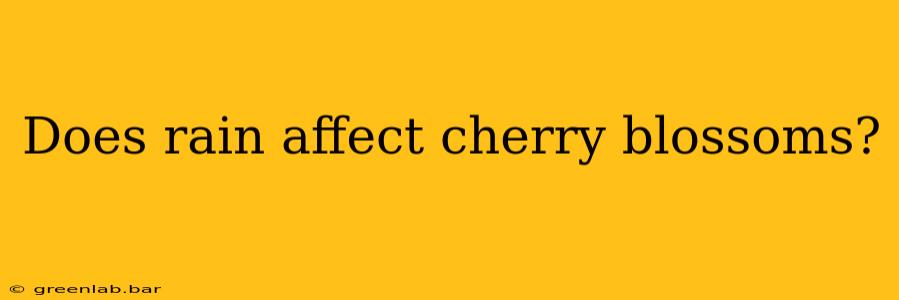The delicate beauty of cherry blossoms, or sakura, is a fleeting spectacle eagerly anticipated worldwide. However, the ephemeral nature of these blooms makes them susceptible to various environmental factors, with rain being a particularly significant one. This article explores the multifaceted effects of rain on cherry blossoms, examining both the positive and negative impacts on their blossoming, longevity, and overall aesthetic appeal.
The Negative Impacts of Rain on Cherry Blossoms
While a gentle shower might seem harmless, heavy or prolonged rainfall can significantly affect cherry blossoms in several ways:
1. Petal Damage and Premature Fall:
Heavy rain can physically damage delicate petals, causing them to bruise, tear, or fall prematurely. The weight of the water can also bend and break the blossoms' stems, leading to a less visually appealing display. This is especially true for already weakened or mature blossoms nearing the end of their bloom cycle.
2. Reduced Bloom Duration:
Rain can shorten the overall blooming period. The constant moisture can lead to faster decomposition of the petals, reducing the time the blossoms remain vibrant and attractive. This is a significant concern for those who travel great distances or plan events around the peak bloom season.
3. Disease and Pest Propagation:
Rain can facilitate the spread of fungal diseases and pests that can harm cherry blossom trees. The wet environment creates ideal conditions for spores to germinate and insects to thrive, potentially affecting the health of the tree and future blooms.
4. Washed-Away Pollen:
For those relying on pollination for fruit production, rain can significantly impact this process. Heavy rainfall washes away pollen, reducing the chances of successful fertilization and consequently impacting the fruit yield.
The Potential Positive Impacts of Rain on Cherry Blossoms
It's not all doom and gloom, however. In certain circumstances, rain can have a positive, albeit indirect, effect on cherry blossoms:
1. Essential Moisture for Growth:
While excessive rain is detrimental, a moderate amount of rainfall is crucial for the overall health and growth of the cherry blossom trees. Adequate hydration ensures proper nutrient uptake and contributes to the trees' ability to produce abundant blooms in the following years.
2. Washing Away Dust and Pollutants:
Rain can cleanse the blossoms and surrounding environment, removing dust, pollutants, and other debris that might otherwise obscure their beauty. This results in a cleaner, more vibrant appearance of the blooms.
Understanding the Severity of the Impact
The impact of rain on cherry blossoms isn't simply a matter of whether it rains or not. The intensity, duration, and timing of the rainfall are crucial factors. A light, short shower during the peak bloom period might cause minimal damage, while days of relentless heavy rain can devastate the blossoms. Furthermore, the specific variety of cherry blossom tree also plays a role, with some being more resistant to rain damage than others.
Conclusion
In conclusion, rain's effect on cherry blossoms is a complex interplay of positive and negative factors. While moderate rainfall is essential for overall tree health, heavy or prolonged rain can significantly reduce the aesthetic appeal and lifespan of the blossoms. Understanding these factors allows for a more nuanced appreciation of the delicate balance that determines the beauty and longevity of these ephemeral wonders of nature.

